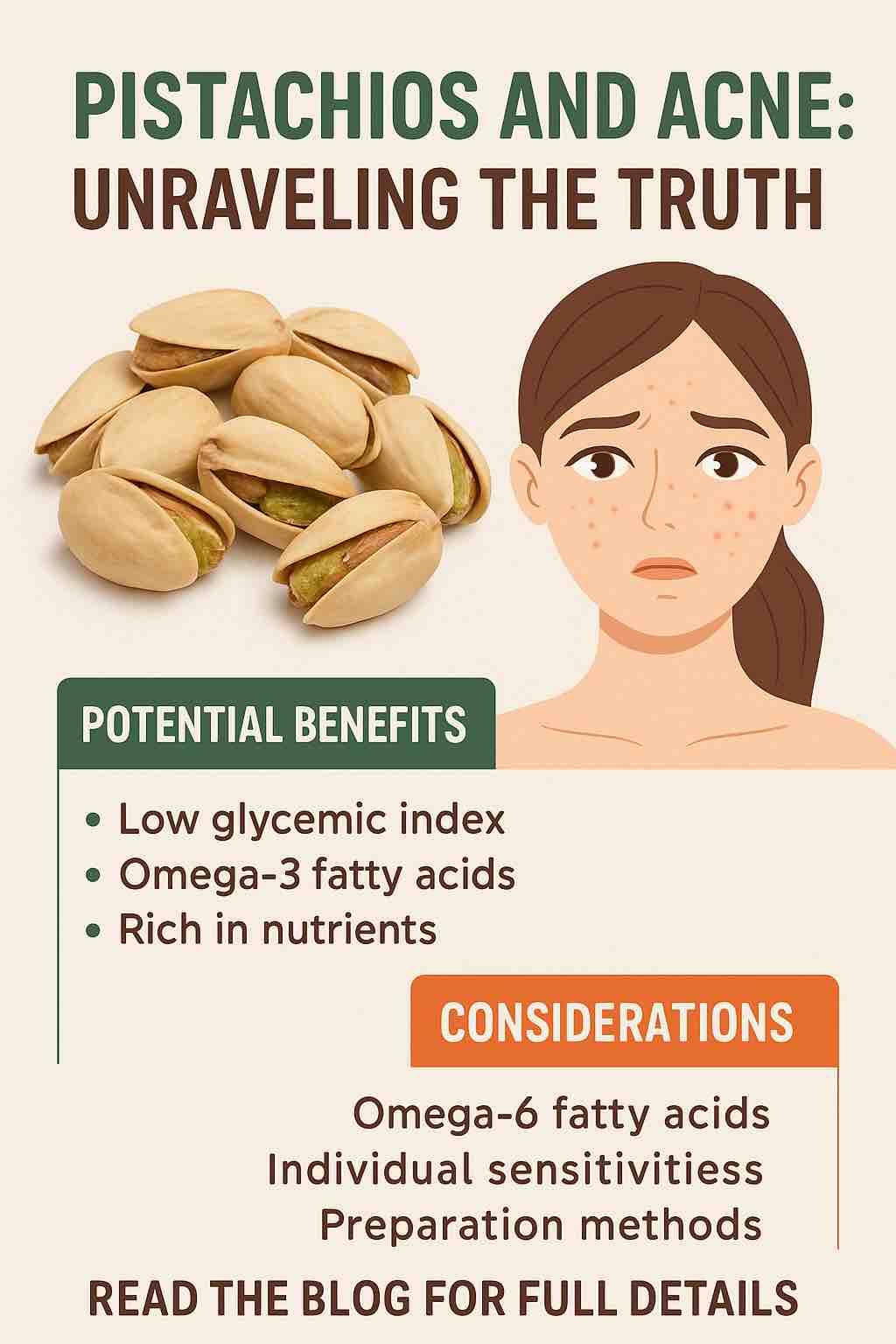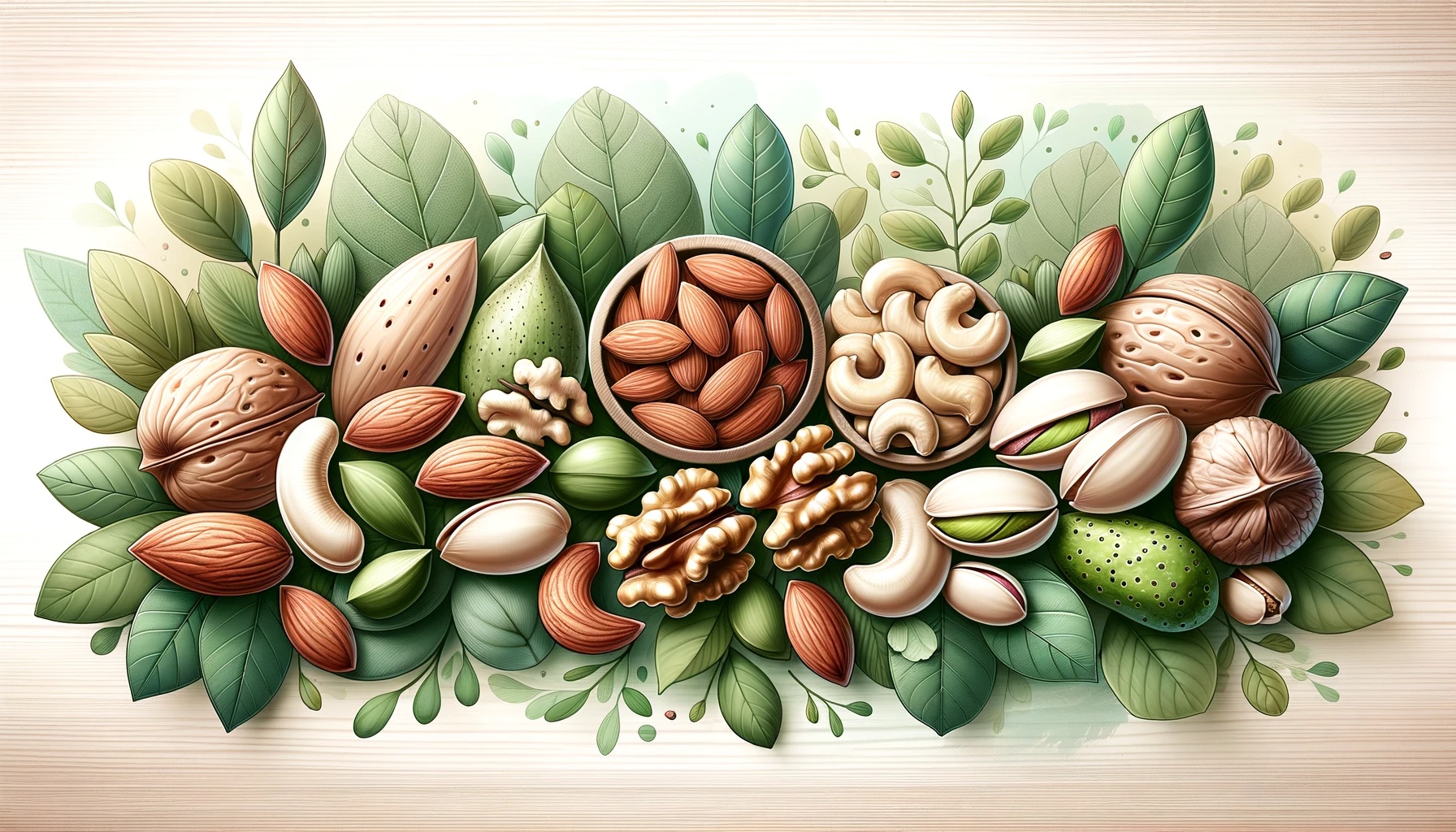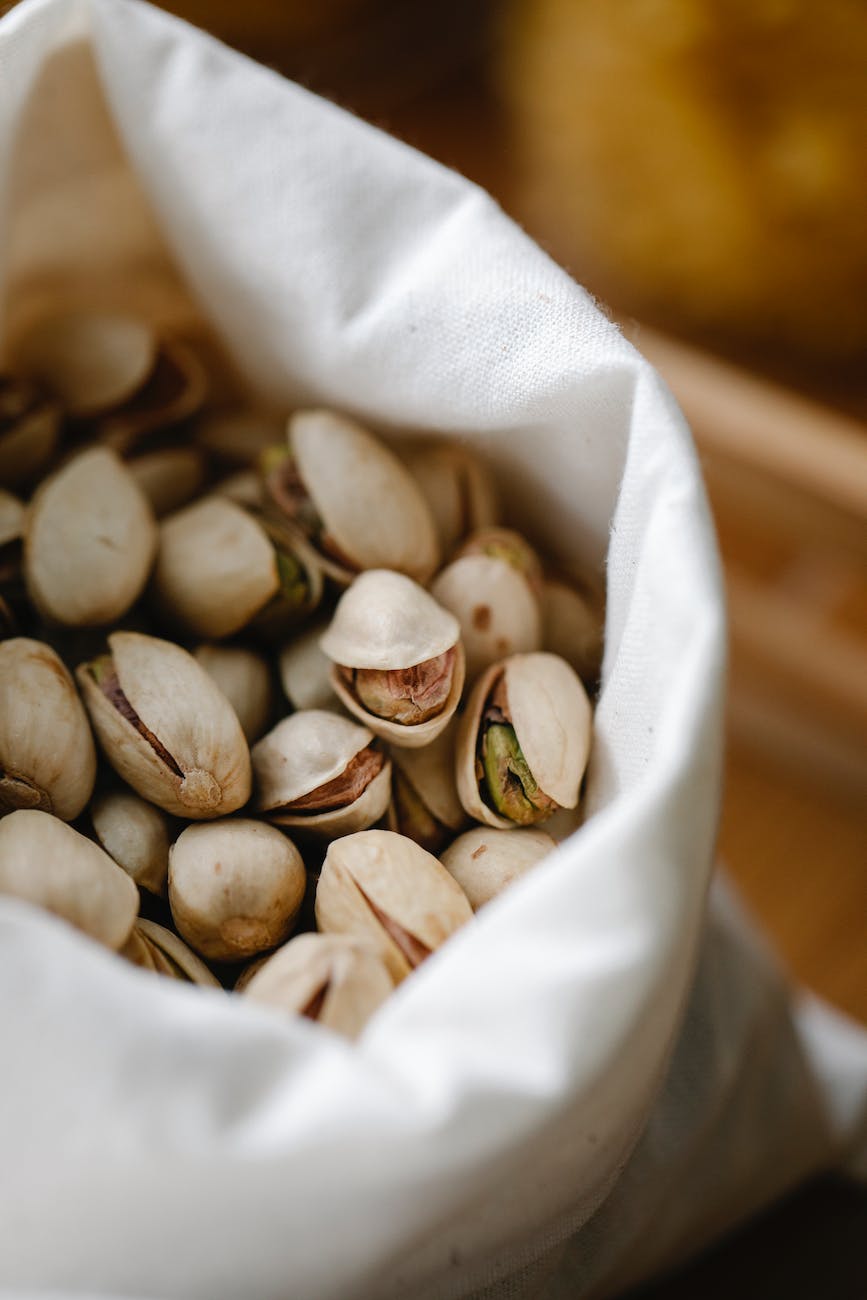
When it comes to skincare, most of us think about serums, cleansers, and moisturizers — but what about snacks? Specifically, what role do pistachios play in the battle for clearer skin?
Pistachios are often celebrated for their crunchy texture, heart-healthy fats, and array of nutrients. Yet, in recent years, some people have started to question whether these little green nuts might actually be a culprit behind stubborn breakouts. So, is there truth to the claim that pistachios cause acne — or is it just another diet myth?
Let’s dive into the science, debunk some myths, and offer a balanced perspective that will help you make more informed dietary decisions.
🥜 Pistachios: A Nutrient-Dense Powerhouse
Before we jump into the acne debate, it’s important to understand what makes pistachios a nutritional standout.
- Healthy fats: Pistachios are a great source of monounsaturated and polyunsaturated fats, especially omega-3 fatty acids.
- Protein-rich: With ~6 grams of protein per ounce, they’re a go-to plant-based protein snack.
- Fiber: They contain both soluble and insoluble fiber, which supports gut health.
- Micronutrients: Pistachios are high in vitamin E, zinc, selenium, and B-complex vitamins — all of which play crucial roles in skin health.
So, nutritionally speaking, pistachios are a solid choice. But the relationship between what you eat and how your skin reacts can be complex and highly individual.
🧪 The Science: Can Pistachios Trigger Acne?
Let’s take a look at what current research and expert consensus say about how pistachios may influence acne development.
🔬 1. Low Glycemic Index — A Plus for Acne
Pistachios have a low glycemic index (GI). High-GI foods cause rapid spikes in blood sugar and insulin levels, which can increase sebum production and skin inflammation — two known contributors to acne. Studies show that a low-GI diet can reduce both the number and severity of acne lesions.
✅ Bottom line: Pistachios may help prevent acne by promoting stable blood sugar levels.
🔬 2. Omega Fatty Acids — Double-Edged Sword
Pistachios contain both omega-3 and omega-6 fatty acids. Omega-3s are anti-inflammatory and often associated with reduced acne severity. However, a high intake of omega-6 without sufficient omega-3s may promote inflammation.
That said, pistachios are not particularly high in omega-6 compared to other common processed foods, and when eaten in moderation as part of a balanced diet, they are unlikely to tip the omega balance dramatically.
⚖️ Verdict: Not harmful unless you’re already consuming excessive omega-6s from other sources.
🔬 3. Zinc and Vitamin E — Skin-Friendly Allies
Pistachios contain moderate amounts of zinc and vitamin E, two micronutrients that have well-established roles in skin repair and inflammation control. Zinc, in particular, helps regulate oil gland activity and may even reduce the severity of acne when consumed in adequate quantities.
🌟 Insight: Far from being acne-causing, pistachios might actually support healthy skin.
🔬 4. Individual Sensitivities and Allergic Responses
Even if science says pistachios are generally skin-friendly, individual reactions can vary. Some people might be sensitive to specific proteins in nuts, leading to inflammation or breakouts. Others might react to added ingredients — such as salt, sugar, or flavorings — often found in processed pistachio snacks.
👁️ Watch for:
- Skin flare-ups after eating flavored or roasted pistachios
- Digestive issues or inflammation that could point to a sensitivity
If you suspect a link between pistachios and acne in your case, try an elimination trial — remove them for a few weeks and observe any changes in your skin.
🚫 The Hidden Pitfalls: It’s Not Always About the Nut
Sometimes it’s not the pistachios themselves but how they’re prepared that causes problems.
- Salted pistachios → Can lead to dehydration, which may cause dry, irritated skin.
- Sugar-coated versions → High-GI sugars can spike insulin and worsen acne.
- Oil-roasted nuts → May contain processed fats that counteract the benefits of raw nuts.
🥇 Best choice: Go for raw or dry-roasted, unsalted pistachios.
📊 What Do Dermatologists and Nutritionists Say?
Here’s what experts in the field have noted in recent publications:
- Dr. Whitney Bowe, a dermatologist and author of The Beauty of Dirty Skin, emphasizes the importance of low-GI, anti-inflammatory foods in managing acne — pistachios can be part of that solution.
- A study published in the Journal of the American Academy of Dermatology (2023) found that high-nutrient, anti-inflammatory diets were consistently associated with reduced acne severity, though no single food, including pistachios, was directly linked to causing breakouts.
🩺 Consensus: Pistachios are not an acne trigger in the general population and may even help reduce flare-ups when part of a nutrient-rich, low-GI diet.
💬 Real People, Real Experiences
Across TikTok and Reddit threads, experiences vary. Some claim clearer skin when nuts are removed from their diet; others swear by pistachios for giving their skin a radiant glow.
💡 Takeaway: Anecdotal evidence is valuable — but not universal. Listen to your body, track what you eat, and be mindful of patterns.
🧭 Final Thoughts: Should You Eat Pistachios If You Have Acne?
Yes — with a few caveats.
Pistachios, especially when eaten raw or dry-roasted and in moderation, are not only safe but potentially beneficial for your skin. However, due to individual variability and the potential impact of other dietary and lifestyle factors, they may not be ideal for everyone.
✅ Eat pistachios if:
- You’re seeking anti-inflammatory, skin-supporting nutrients
- You’re avoiding high-GI snack foods
- You want a clean, plant-based protein and healthy fat source
❌ Be cautious if:
- You notice breakouts consistently after eating them
- You’re consuming them with added sugars or oils
- You have known nut sensitivities
📝 Final Word
Nutrition isn’t a one-size-fits-all science — especially when it comes to skin. While pistachios are unlikely to be the cause of acne for most people, your skin’s response is uniquely yours. Stay observant, eat clean, and when in doubt, consult with a dermatologist or registered dietitian for tailored guidance.
So the next time you reach for a handful of pistachios, rest assured — you’re probably doing your skin more good than harm.
🧠 10 Frequently Asked Questions (FAQs)
1. Can eating pistachios cause acne breakouts?
For most people, pistachios do not directly cause acne. In fact, their anti-inflammatory nutrients and low glycemic index may support skin health. However, individual sensitivities can vary.
2. Are pistachios good or bad for oily skin?
Pistachios contain zinc and vitamin E, which may help regulate oil production and reduce inflammation. When eaten in moderation and unprocessed form, they are generally beneficial for oily skin.
3. What’s the difference between raw and roasted pistachios for acne?
Raw or dry-roasted pistachios are preferable. Oil-roasted versions may contain unhealthy fats, and salted or flavored varieties may irritate your skin due to added sodium or sugar.
4. Can pistachios help reduce acne due to hormonal imbalances?
While pistachios don’t directly alter hormones, their zinc and omega-3 content may help reduce inflammation associated with hormonal acne. They should be seen as a supportive food, not a cure.
5. Is the omega-6 in pistachios bad for acne?
Pistachios do contain omega-6s, but not in excessive amounts. If balanced with omega-3-rich foods like flaxseeds or fish, pistachios do not pose a significant inflammatory risk.
6. How many pistachios per day is safe for acne-prone skin?
About 1–2 ounces (28–56 grams) per day is a reasonable amount. Overconsumption, like any food, can contribute to overall dietary imbalances.
7. Do pistachios affect skin differently depending on skin type?
There’s no strong evidence that skin type (dry, oily, combination) significantly alters the effect of pistachios. Responses are more dependent on individual metabolism, diet, and sensitivities.
8. Should I avoid pistachios during an acne flare-up?
Not necessarily. If your pistachio intake is clean (raw or dry-roasted) and moderate, they may actually help reduce inflammation. But if you notice a direct link between consumption and flare-ups, pause and reassess.
9. Can pistachios improve skin beyond acne — like hydration or glow?
Yes! The vitamin E and healthy fats in pistachios help protect skin cells from oxidative stress and may contribute to smoother, more hydrated, and radiant skin over time.
10. What are the best alternatives to pistachios for clearer skin?
If pistachios don’t work for you, try skin-friendly snacks like walnuts (rich in omega-3s), pumpkin seeds (high in zinc), chia seeds, or avocados, all of which support healthy skin.













